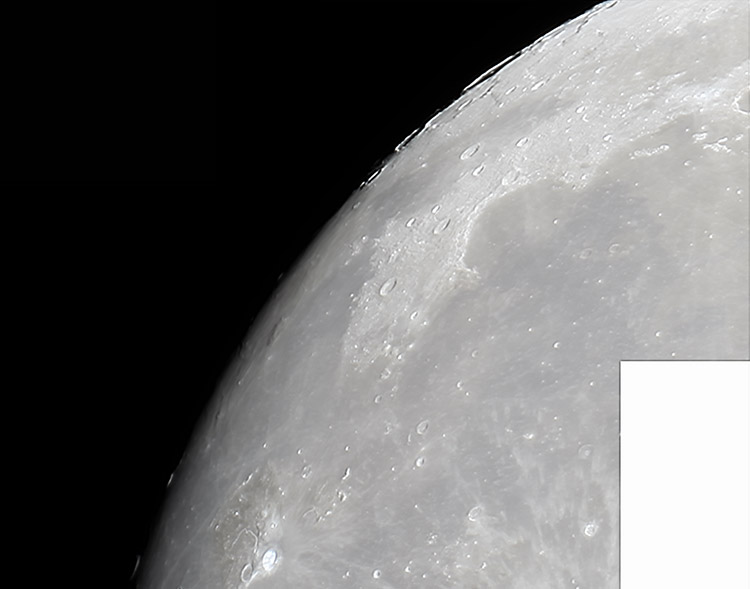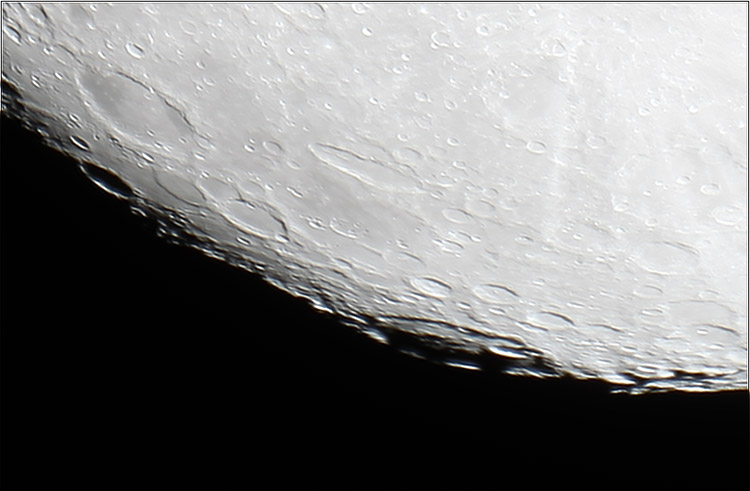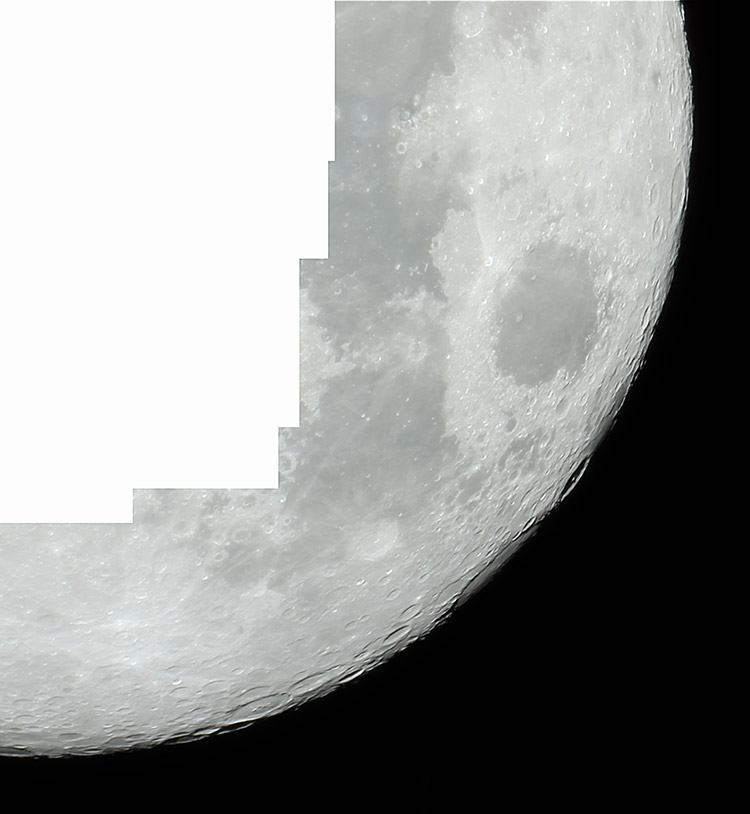- Moon: Northern Procellarum and western Imbrium
- Moon: South-western rim, region around crater Wargentin
- Moon: South-eastern limb at favorite libration
Moon: Northern Procellarum and western Imbrium
Place cursor over the image for annotated version, click for the full size version.
Canon EOS 500D and Celestron C90, prime focus. Mosaic of two images. Stacked in AutoStakkert!2 (~300 frames each) and sharpened in RegiStax6 using linked wavelets.
Some formations of interest: Mons Rümker (70 km diameter, ~700m height) volcanic complex consisting of about a dozen of overlapping domes. Aristarchus plateau - a 2 km high plateau in western Oceanus Procellarum. On it there are the brightest crater on the moon, Aristarchus (40 km), the place of many alleged sightings of "Lunar Transient Phenomena", and Vallis Schröteri, the largest sinuous rille (160 km long, 10 km max width) - once a channel for rapidly flowing lava. Mons Gruithuisen (Delta and Gamma) are dome-like mountain massifs, probably of volcanic origin.

Moon: South-western rim, region around crater Wargentin
Place cursor over the image for annotated version, click for the full size version.
Canon EOS 500D and Celestron C90, prime focus. Stacked in AutoStakkert!2 (~200 frames) and sharpened in RegiStax6 using linked wavelets.
Some formations of interest: Wargentin is the largest crater (84 km) filled to the rim (by lava?). Schiller is strangely elongated crater (179x71 km), it must have been created by and extremely oblique impact. Bailly is a gigantic crater (303 km, ~6km deep) - a small multiring basin.

Moon: South-eastern limb at favorite libration
Place cursor over the image for annotated version, click for the full size version.
Canon EOS 500D and Celestron C90, prime focus. Mosaic of six images. Stacked in AutoStakkert!2 (~200-300 frames each) and sharpened in RegiStax6 using linked wavelets.
Some formations of interest: Sources of most prominent ray systems in this part of the Moon: Stevinus A, Furnerius A two small fresh 10 km size craters, Messier two small irregularly shaped craters created by a very oblique impact, source of two bright rays, Proclus (28 km), Petavius B (33 km), and Langrenius (132 km), named after the creator of the first Moon map with the name of formations. Lunar maria best visible at favorite libration: Marginis, Smythii, Australe .
